How do businesses get products to you?
Well, through distribution channels.
This article covers the examples of distribution channels like direct sales and wholesaling, along with their benefits and real-life case studies so you can choose the best ones for your business.
Quick Summary
- Distribution channels are key to getting your products to customers fast.
- Knowing the difference between direct and indirect distribution channels and their benefits is crucial for determining your sales and market coverage strategies.
- Distribution strategies have evolved with the advancement of e-commerce and AR technologies. Brands are leveraging these technologies for better customer engagement.
What are Distribution Channels?
Distribution channels are networks that get products and services from producers to customers. In a competitive market the choice of distribution channels can make or break a company. Factors like the nature of the product, target market and competitive landscape play a big role in these decisions.
With digital technology, distribution channels have evolved, adding a touch of personalization to customer relationship management, e-commerce, and marketing strategies. This has made it possible for businesses to reach more customers more efficiently and convince them to buy more conveniently.
Why Do You Need a Strong Distribution Channel for Sales?
Distribution channels are key to a go-to-market strategy, which helps businesses expand market coverage and increase sales. Knowing these channels is important as they determine how products get to customers, from pricing to customer satisfaction.
At the end of the day distribution channels are part of the overall sales and marketing strategies, including product, promotion and price.
Top Distribution Channels Examples: Types & Benefits
Distribution channels are key to marketing by getting products to customers on time, customer satisfaction.
But understanding distribution channels is not just about logistics; it’s about strategic planning and market penetration.
Types of distribution channels
Distribution channels fall into two broad categories. Direct and Indirect.
Direct channels allow manufacturers to interact with customers directly, cutting out intermediaries and often saving cost for both the producer and the customer. With the direct channel, the company sells directly to the customer.
For example, a brewery that brews its own beer and sells it to customers at its own brick-and-mortar location. Direct channels like e-commerce and physical stores that allow producers to sell directly to customers, have more control over the distribution process.
Indirect channels involve intermediaries like wholesalers and retailers who handle the distribution channels on behalf of the producer.
Each has its own benefits and challenges, and the choice between them depends on product type, market reach and customer preferences. Let’s go through each of them in detail.
Direct Distribution Channels
Direct distribution channels allow manufacturers or service providers to interact with end customers directly. This model is also known as direct-to-consumer (D2C), it eliminates intermediaries, the producer can sell directly to the end customer.
Companies like Apple and Amazon uses direct channels and a direct channel to reach more customers and have more control over the customer experience.
One of the biggest benefits of direct channels is cost savings for customers. Buying directly from the manufacturer often means lower prices. Direct channels also gives companies more control over the customer buying experience, more personalized interactions and immediate feedback.
Direct sales can take many forms, e-commerce platforms, physical stores and direct sales teams. Each of these channels has its own advantages in terms of customer engagement and market reach.
1. E-commerce
E-commerce platforms are the face of direct distribution channels.
Companies like Amazon support this model by selling products directly to customers through their online marketplace. This allows for control over pricing, inventory and customer relationships, faster delivery and more products.
2. Physical stores
Physical stores are key to direct distribution by integrating various supply chain functions like customer service, inventory management and order fulfillment. They are part of omnichannel strategies, as customers can choose from multiple purchase options, in-store browsing and online purchase.
Retailers are using physical locations to support flexible fulfillment options like buy online, pick up in-store (BOPIS) and home delivery.
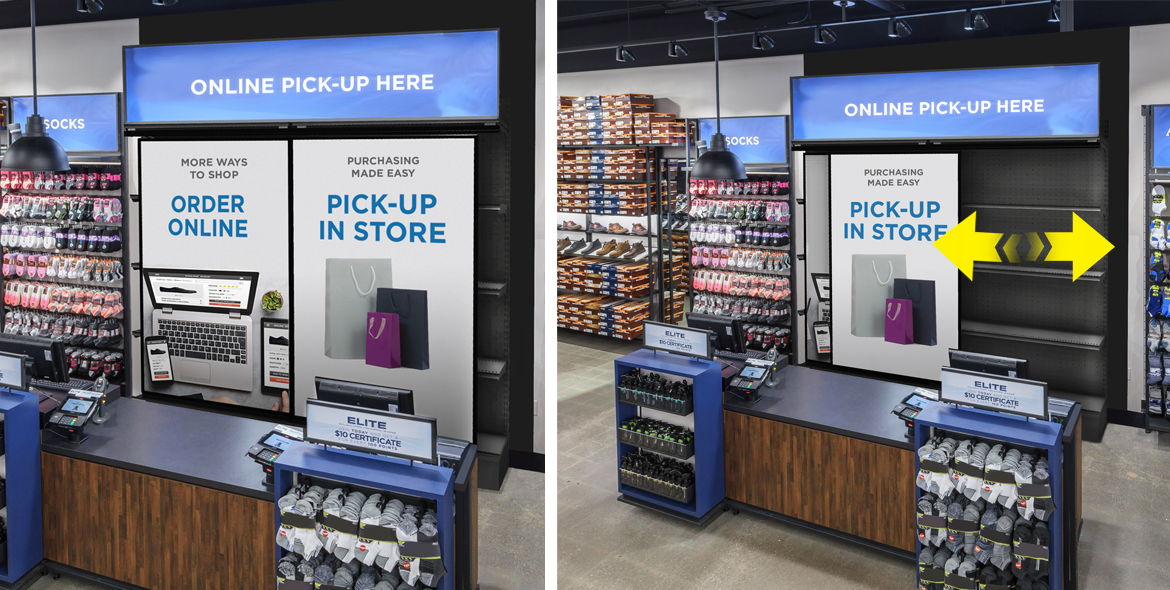
3. Direct sales teams
Direct sales teams are more effective in business-to-business (B2B) markets where personal interaction and tailored solutions are key. These teams enables direct engagement with customers, build strong customer relationships and increase sales.
Indirect Distribution Channels
Indirect distribution channels involve intermediaries like wholesalers and retailers who handle the distribution. This is used in traditional brick-and-mortar stores where intermediaries distribute, sell and promote products and services.
Who are intermediaries in distribution channels?
Intermediaries in distribution channels do more than just move goods; they also transfer ownership and provide valuable market information. This information can help businesses understand market demand and competition, to make better decisions.
But the inclusion of intermediaries adds another layer between the producer and the customer which can complicate the distribution.
Two-tier distribution or level 2 distribution channel involves multiple intermediaries between producer and buyer. This multi-tiered approach allows businesses to tap on the expertise and market presence of intermediaries to reach a bigger audience. Channel strategies are key to optimize these relationships and distribution.
Indirect channels are more suitable for products that require high availability and multiple touchpoints. It helps small businesses to reach a bigger audience by leveraging the existing market presence of intermediaries through an indirect channel.
1. Retail partners
Retail partners are part of indirect distribution channels.
To give you an example, companies like Coca-Cola has a vast network of channel partners to ensure product availability across multiple locations worldwide. This strategy maximize visibility and accessibility, small businesses can tap into existing market and expand their reach.
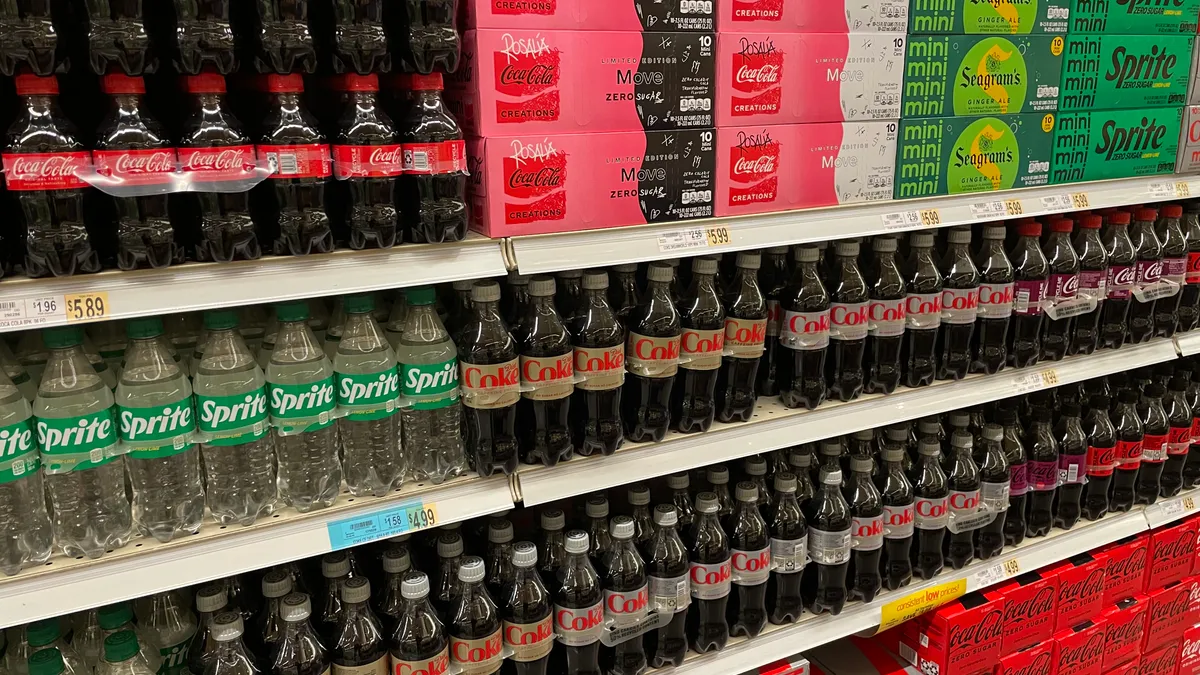
2. Wholesalers
Wholesalers are part of the supply chain by buying goods in bulk from producers and selling to retailers. This allows producers to focus on manufacturing while wholesalers handle the distribution.
Wholesalers also stabilizes prices and ensure product availability.
3. Agents and brokers
Agents and brokers are intermediaries that connect manufacturers to end consumers or retailers. They are crucial in industries like real estate and insurance where personal relationships and expert advice are important.
These intermediaries negotiate terms, represent products and assist with sales strategies, making them essential in certain markets.

Hybrid Distribution Channels
Hybrid distribution channels combines both direct and indirect channels, offering flexibility in reaching consumers through multiple touchpoints. This allows businesses to adapt to changing market and consumer behavior and optimize their reach and sales.
By combining direct and indirect channels, companies can get the control and cost savings of direct sales and leverage the market presence and expertise of intermediaries. This dual approach increases customer engagement and a more comprehensive distribution strategy.
1. Online and offline sales
Companies like Nike uses both e-commerce and physical stores to engage customers. For instance, in 2023, it could drive 15% of its sales through digital channels, a solid addition to their otherwise dominant physical store sales model.
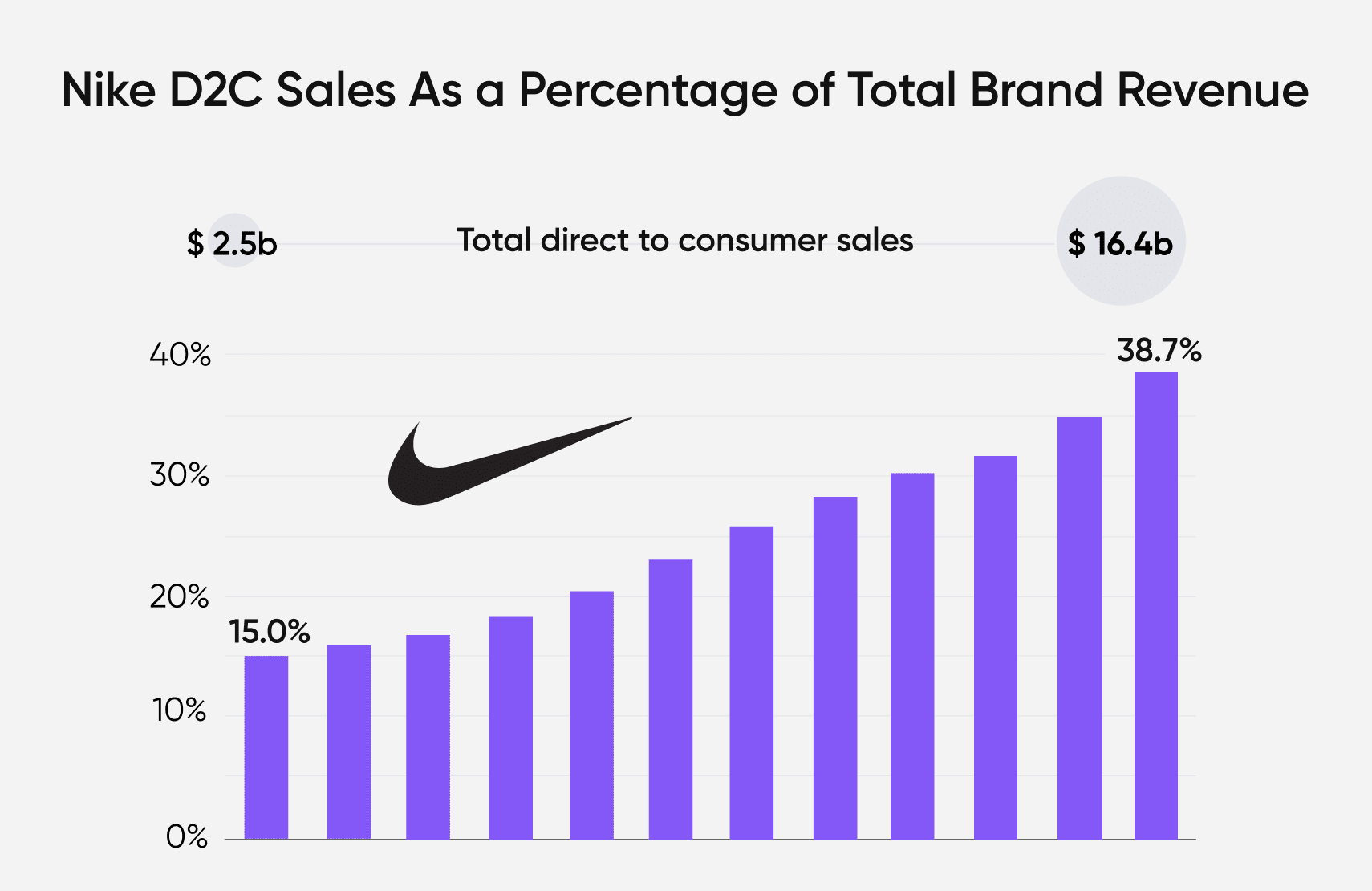
This combination allows businesses to maximize their reach and adapt to consumer behavior, drive sales through multiple channels and a more personalized shopping experience.
2. Multi-channel
Multi-channel means using multiple distribution channels to reach more products.
Reiterating the same example, Nike uses e-commerce and physical stores to reach a broader audience and customer experience.
This allows businesses to engage customers across multiple platforms and gain more visibility and sales.
3. Franchise models
A franchise is a business model where a party gets the license to access the company’s proprietary information, processes and trademarks. The franchisee usually pays the initial start-up and licensing fees to the franchisor.
Franchise models, as indirect channels of distribution, allows businesses to scale fast by partnering with franchisees while having some level of direct control.
For example, Zara, a Spanish fast-fashion brand, expands to foreign markets through subsidiaries, franchising and joint ventures.

This allows companies to scale through local franchisees, have control over key parts of the business and leverage the franchisees’ market knowledge and presence.
What are Intensive, Selective, and Exclusive Distribution Strategies?
Distribution intensity can be classified into three: intensive, selective, exclusive. Each level represents a different approach to market penetration and intermediary involvement.
Intensive distribution means placing products in as many outlets as possible to reach more, selective distribution means fewer intermediaries based on strict criteria. Exclusive distribution means limited intermediaries to have a strong, dedicated selling force for a vendor’s products.
1. Intensive distribution
Intensive distribution is a strategy to maximize product availability by using many intermediaries. This means products are stocked in as many retail outlets as possible, to reach more.
This distribution strategy is used for everyday items like snacks and beverages, which consumers buy frequently.
2. Selective distribution
Selective distribution means selecting intermediaries to enhance the brand image and control over the product presentation. This is common in sectors like electronics and luxury fashion where brand prestige is key.
3. Exclusive distribution
Exclusive distribution means giving one distributor the exclusive rights to sell a product in a specific area. This is for luxury goods and high-end brands to maintain brand exclusivity and high quality representation.
How Do You Select the Most-Profitable Distribution Channel for Your Business?
Several factors affect the choice of distribution channels. For instance, the availability and capability of middlemen, distribution intensity and the nature of the product or service.
Effective distribution channels can increase customer satisfaction by ensuring timely delivery and adequate inventory.
Using multi-channel approach allows companies to engage with customers across different platforms, maximizing visibility and sales. Integrating e-commerce with physical stores increases customer engagement.
Direct distribution allows brands to get critical data on customer behavior and preference. They also get better margins by avoiding middlemen costs.
Exclusive distribution gives specific retailers or distributors the right to sell a brand, which often results in higher perceived value.
In short, you’ll know which distribution channel is best suited for you by trying out a few channels, and optimizing your sales and marketing strategies for those channels.
The Impact of New-Age Technologies on Distribution Channels
The digital age has changed distribution channels, making it more convenient and attractive for consumers. Companies like Amazon have simplified the buying and delivery process, disrupting traditional retail.
Even when a company uses indirect channels of distribution, digital technology allows them to manage relationships with these partners, as well as decisions on the overarching distribution strategy.
Online advertising has also changed traditional marketing approach by allowing businesses to target specific demographics more accurately. Social media has become a source of inspiration for purchases. Nearly 39% of consumers say that social media is their main source of inspiration for purchases.
Also, technology like augmented reality and artificial intelligence are changing product marketing and customer experience. For example, L’Oréal uses augmented reality to allow customers to try on makeup virtually, while Walmart uses AI to personalize online shopping.

How are Leading Brands Using Distribution Channels in Their Sales and Marketing Strategies?
Distribution strategy is key to maximize product reach and customer satisfaction in today’s competitive world. The marketing strategies as seen in companies like Amazon, Coca-Cola and Tesla has exemplary distribution strategy to follow.
These case studies show how different distribution models can be applied to achieve impeccable business results.
1. Amazon’s direct-to-consumer model
Amazon has challenged traditional distribution models through its direct-to-consumer e-commerce model, selling products directly to consumers without any middlemen.
A great example of this is Kindle.
Even though Amazon doesn’t reveal much about its sales or profits, the profit from Kindle is estimated $565 million in 2023. A lot of which can be attributed to the superior customer experience delivered through D2C approach.
2. Coca-Cola’s wide retail partnerships
Coca-Cola has a vast network of independent bottling partners to ensure product availability in over 200 countries. This supports their product distribution strategy across the globe. This wide network of retail partners ensures Coca-Cola’s beverages are available in all possible locations.
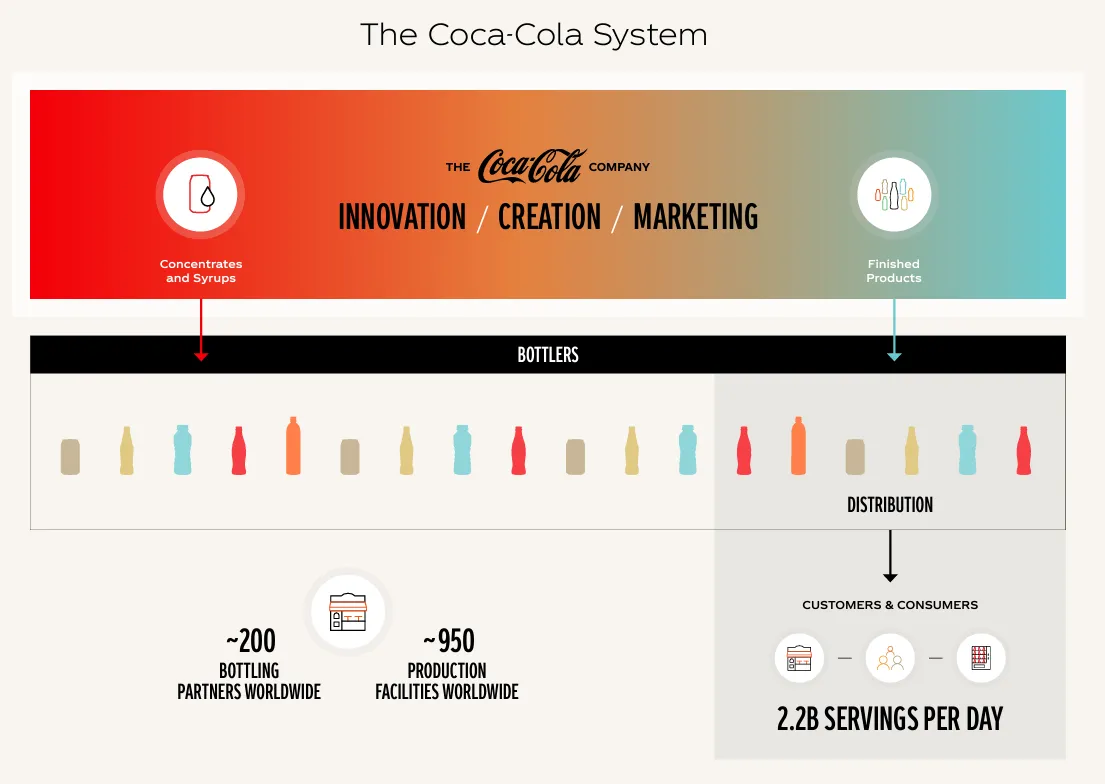
3. Tesla’s direct sales
Tesla’s direct sales model allows it to sell vehicles directly to consumers without intermediaries. This approach simplifies the buying process, reduces cost of third party sales and gives the company more control over the customer journey.
By providing a seamless and personalized buying experience, Tesla improves customer satisfaction and maintains brand consistency.
The Role of CRM in Optimizing Distribution Channels
CRM (Customer Relationship Management) is key to manage sales distribution channels by providing a single platform to manage all interactions and data across the sales process.
Here’s how it helps.
1. Channel partner management
- Centralized database: CRM software stores all information about distributors, retailers and other channel partners including contact details, performance metrics and contracts.
- Performance tracking: It tracks sales, inventory and market share for each channel partner to evaluate performance and identify top performers.
- Incentive management: It manages commission structures, bonus programs and other incentive plans to motivate channel partners.
- Collaboration tools: It enables communication and collaboration between the company and its channel partners through shared documents, email and messaging.
2. Sales force automation
- Territory management: A CRM can help assign territories or zones to sales divisions and track activities within each channel.
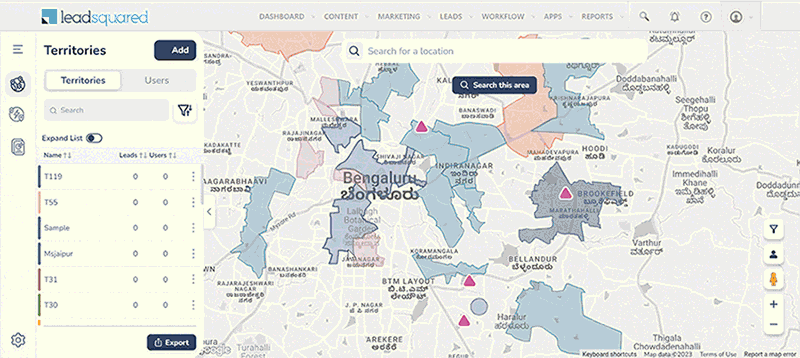
- Order management: It helps processes orders from creation to fulfillment to ensure accurate and timely delivery.
- Sales forecasting: It analyzes sales data to predict future sales and optimize inventory.
- Sales performance Analysis: It tracks sales metrics, identifies top performing sales reps and provides insights to improve.
3. Customer data management
- Customer profiles: It helpscreate and maintain customer profiles including purchase history, preferences and demographics.
- Customer segmentation: A CRM segments customers based on common characteristics to tailor marketing and sales campaigns accordingly.
- Customer satisfaction: It helps you tracks customer sentiments and identifies areas of improvement.
4. Marketing and sales alignment
- Lead Management: CRM software captures and qualifies leads and distributes to the right sales reps.
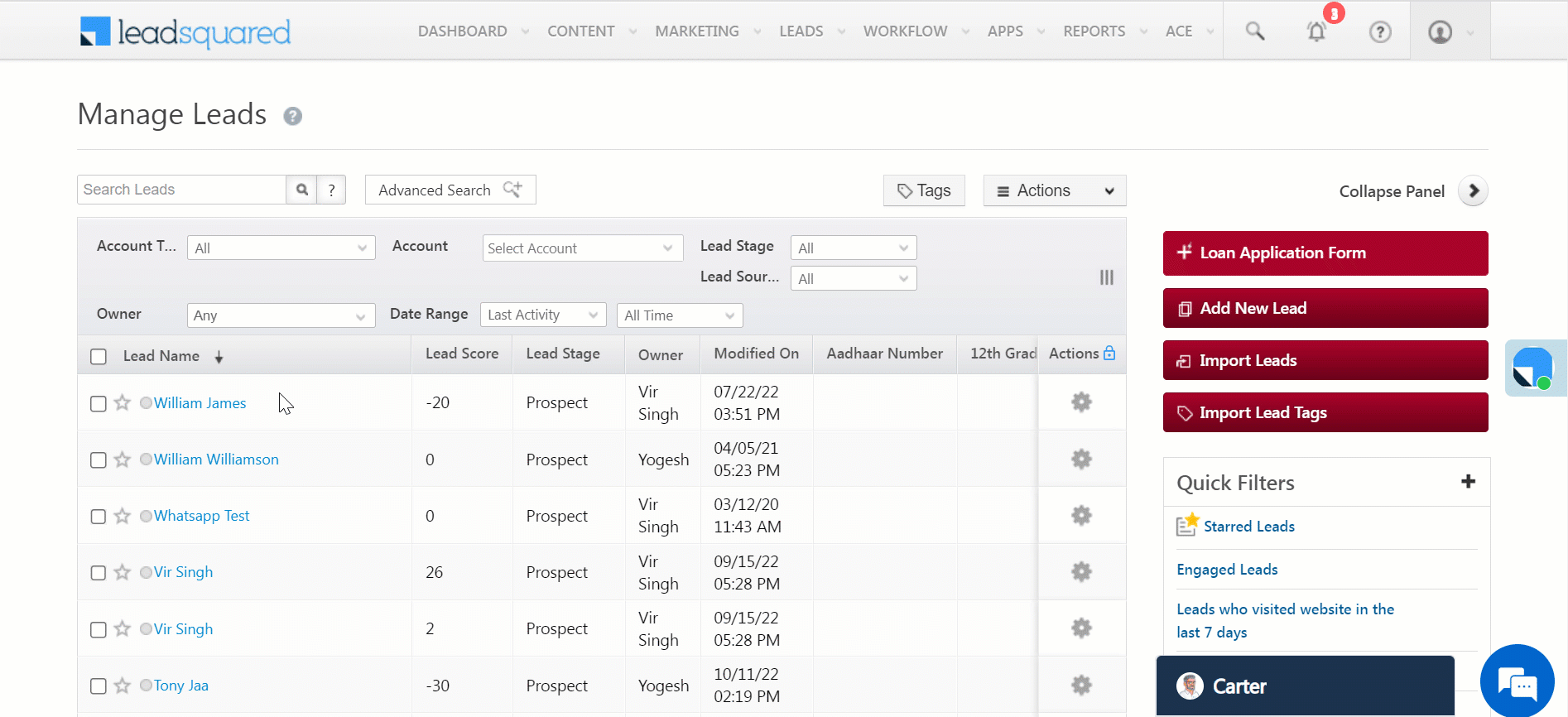
- Campaign management: It tracks campaign performance and measures impact on sales.
- Sales and marketing collaboration: It enables collaboration between sales and marketing teams to engage customers.
5. Inventory management
- Real-time inventory visibility: A CRM can be integrated with ERP or inventory management software to showcase product availability across the distribution network.
- Demand forecasting: It predicts product demand to optimize inventory and prevent stockouts or overstock.
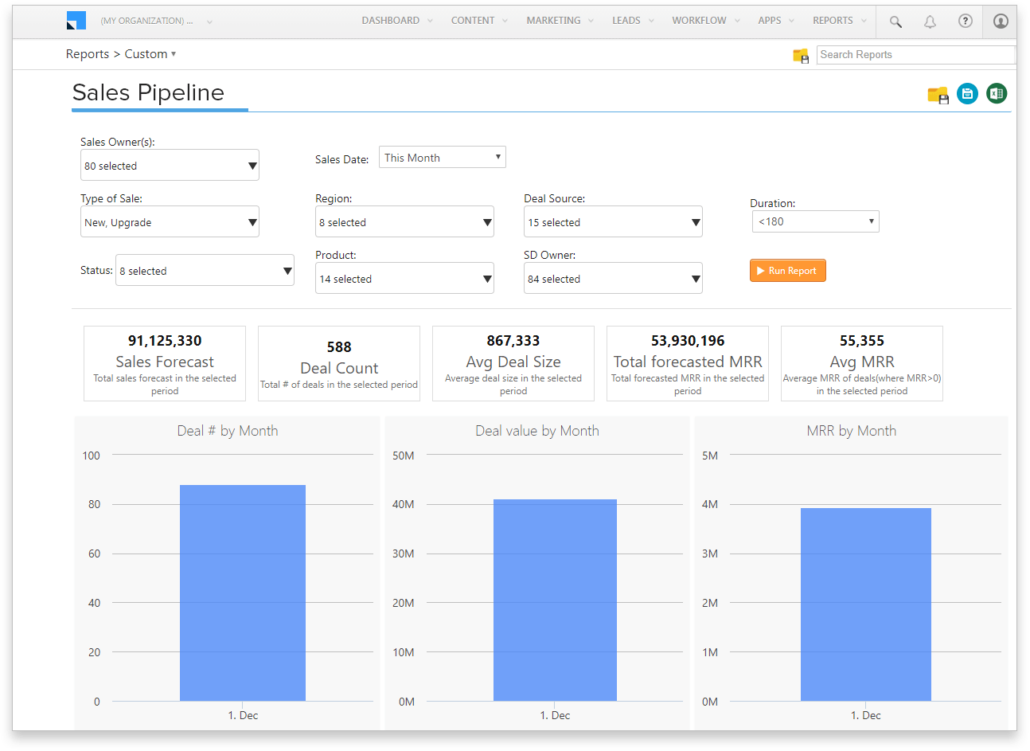
- Order fulfillment: It simplifies order fulfillment by ensuring accurate and timely delivery.
6. Analytics and reporting
- Performance metrics: CRM tools track KPIs to measure sales and distribution channel performance.
- Sales analysis: It shows sales trends, product performance and customer buying behavior.
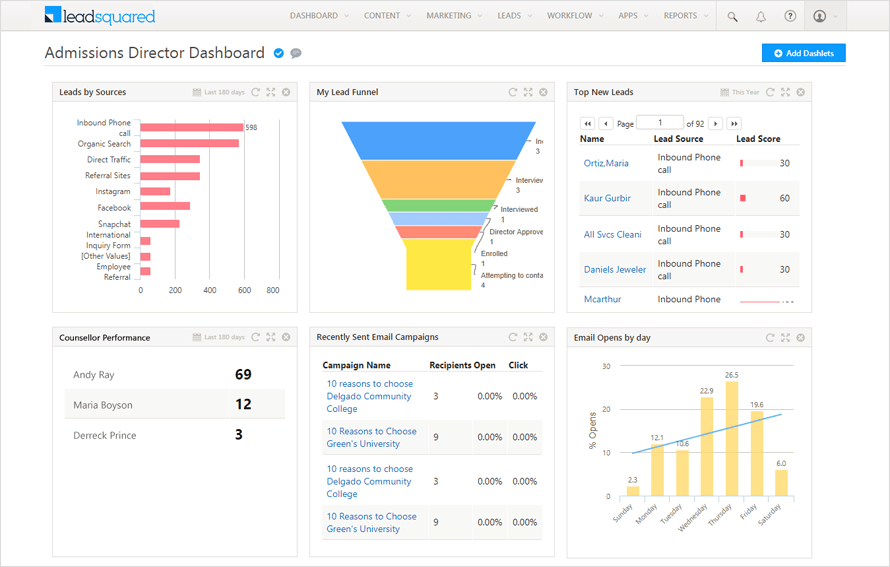
- Channel performance: It helps evaluate channel performance to optimize resource allocation.
Conclusion
In short, distribution channels are the foundation of any business strategy. They get products to customers faster and efficiently, thereby increasing customer satisfaction and sales. Whether direct, indirect or hybrid, the distribution strategy is key to a company’s overall success.
By understanding and using different types of distribution channels, businesses can optimize their operations, engage with customers better and adapt to changing market conditions.
If you are looking for a software to manage your distribution channels, attribute conversion sources, we’ve just the right solution for you. Contact us to know more about LeadSquared’s capabilities in managing various sales distribution channels.









